What is Dutch food culture? Ask any good and honest Dutchman and they’ll tell you: The Netherlands is known for a lot of things, but not food. While there are plenty of traditional Dutch dishes, nobody would really define Dutch food as a cuisine (the same goes for Scandinavian countries as well).
I mean think about it. You’ve been to Thai restaurants. You’ve been to Greek restaurants. But have you ever heard of a Dutch restaurant? It’s just not really a unique brand of food.
However, just because there’s no specific Dutch cuisine doesn’t mean there isn’t great food in the Netherlands. Some of the best restaurants I’ve ever been to are in Amsterdam. You just gotta know what to look for and where to find it.
So in this post I’ll explain everything you need to know about Dutch food culture in order to have a happy stomach on a trip to the Netherlands.
Note: this article contains affiliate links, which means that should you purchase something or get a quote through them I may make a small commission at no additional cost to you. This helps keep the site running with up to date information. I do not represent GetYourGuide or Viator. This is information only and not a recommendation to buy the product mentioned in this article.
So What Exactly is Dutch Food?
It might not be a cuisine but the Netherlands has plenty of its own unique dishes and food creations. Most of these things you won’t find anywhere else in the world. Well, that is, unless you find that elusive Dutch restaurant. Most “Dutch food” is meat and potatoes based.
These days the Dutch are master farmers, but in medieval days not a lot grew in the clay soil of the Netherlands. Fresh produce was tough to come by. I’ll break down the typical Dutch dishes for you here. If you really want to experience Dutch food culture, you’ll have to try at least some of these creations.
Dutch food to be sure to try
Bitterballen
This is the most uniquely Dutch food on the planet. It’s typical Dutch bar food that you eat while drinking with friends. So what is it? Nobody actually knows. It’s a deep fried ball of mushy meat coated in bread crumbs and no one can describe exactly what’s inside.
It’s usually served with mustard to dip in. You’ll see it on the appetizer menu of any contemporary non-ethnic restaurant you go to. If you don’t try bitterballen have you even been to the Netherlands?
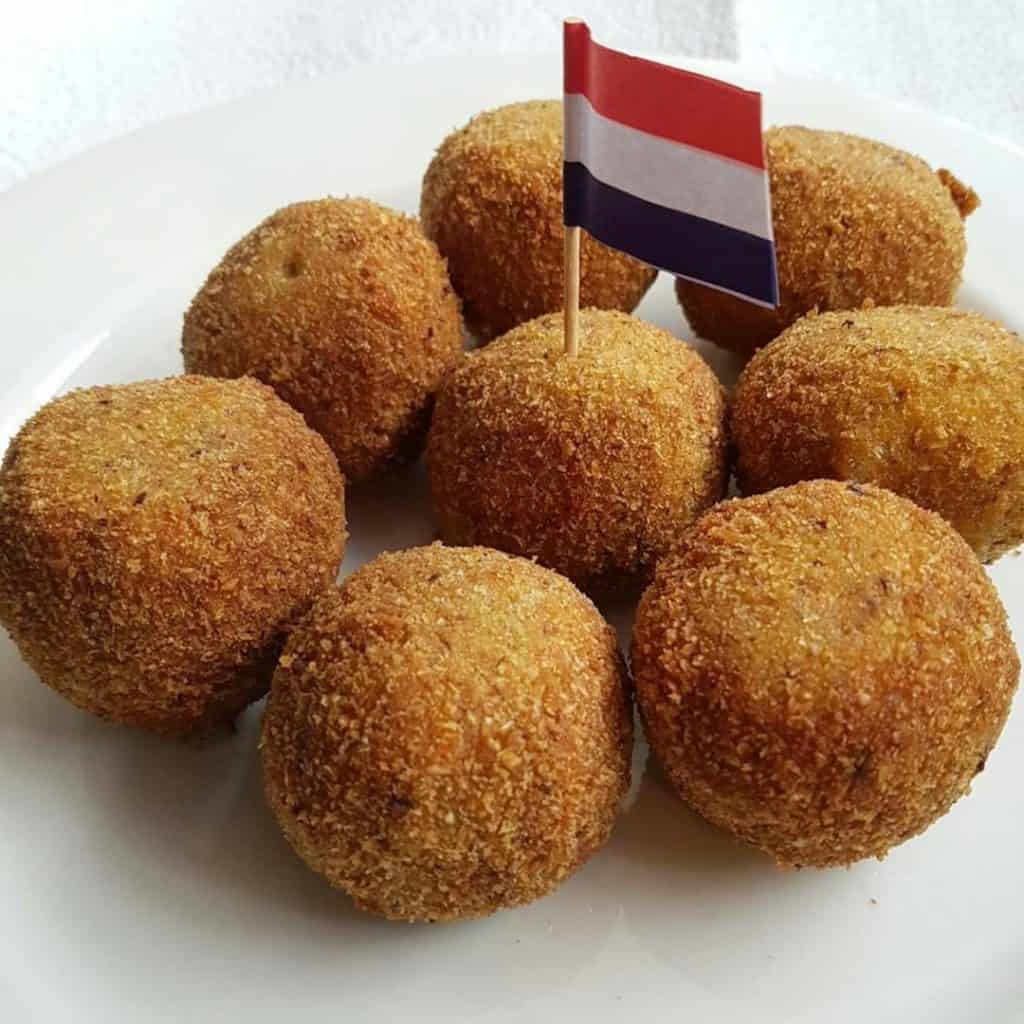
Haring Hollandse Nieuwe
Raw herring with pickles and onion. Personally I’ve never had it since I’m not a fan of raw fish (unless I’m in a Japanese restaurant), but people swear by it. It’s more street food than a meal. You’ll see it at markets or food trucks. If you are okay with raw fish this is probably the most Dutch thing you will do on your trip.
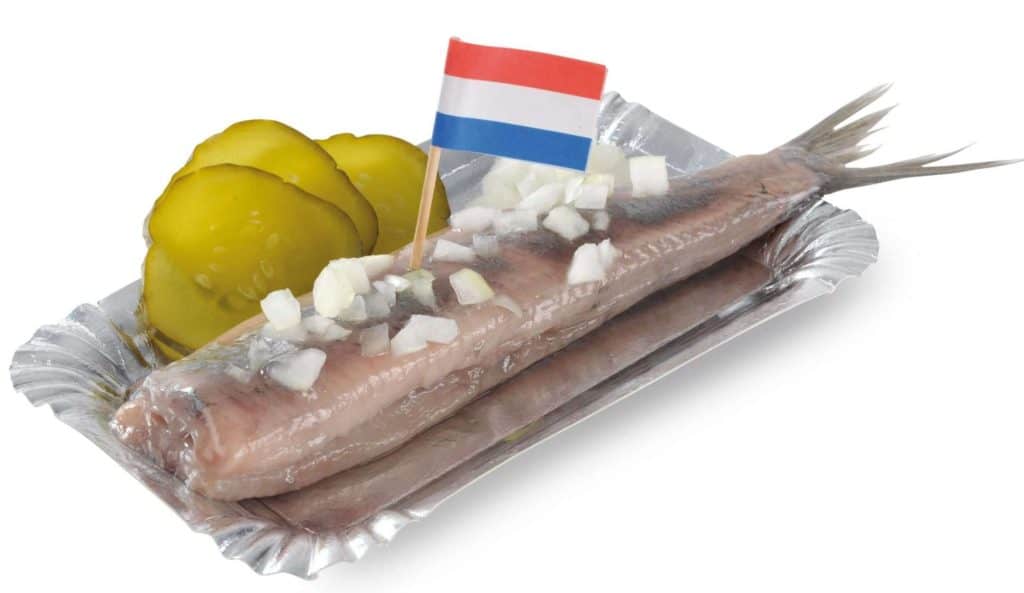
Stamppot
This is a mashed potato dish served with spinach or some other greens, often with sausage mixed in. For an actual meal, this is as Dutch as you can get. Any sort of traditional Dutch restaurant – of which there are only a few in Amsterdam – will serve stamppot as a main course.
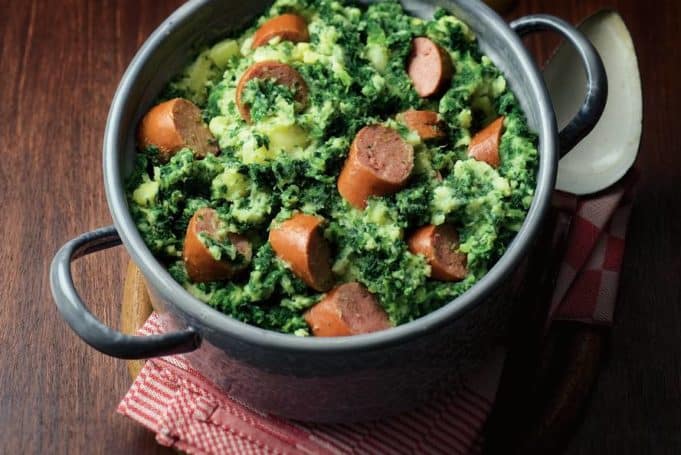
Stroopwafek
Pronounced “strope-wafle”, these are taking the world by storm. You can now find stroopwafels at supermarkets in numerous countries. It’s a caramel covered mini-waffle and it’s delicious. But don’t buy one from the store. Get a fresh made one served warm. If you’re in Amsterdam you can stop by Melly’s Stroopwafels for a fresh one.

Oliebollen
Oh the oliebol, which literally means ball of oil. It’s fried like a donut but more round and comes coated in powdered sugar. They are pretty delicious but horribly unhealthy. Usually these are only available in the winter and are found at weekend markets.

Kibbeling
Kibbeling is lightly fried fish bites of fresh white fish served with your choice of dipping sauce. I ate this almost every weekend I lived in the Netherlands. You can find them at fish stores in malls or at weekend markets. In the touristic center of the city, you can try the kibbeling at Frens Haringhandel.

Pannenkoeken
Dutch pancakes are like a mix between American pancakes and crepes. They can be savory or sweet and are enjoyed at any time of the day, not just for breakfast.
For the best pancakes go to a specific pancake restaurant like Restaurant De Carrousel. Or better yet, if you want to devour as many pancakes as you want while getting a scenic cruise down the IJ River in Amsterdam, you need to check out the Pannenkoekenboot (Pancake Boat).

Appletart
For a proper desert at a restaurant try some Dutch apple pie, one of the oldest recipes in the country.
Dutch food you can live without
- Kroket: The Dutch croquette is similar to bitterballen but tastes more deep fried. They are filled with all sorts of puréed meats. You can purchase them from vending machines in the train station. I’d recommend skipping these in favor of bitterballen.
- Erwtensoep: This is a traditional Dutch soup made from peas and carrots. It’s thick and creamy and has bits of sausage in it. It’s not bad but there are many other things I’d recommend trying before this soup.
- Kapsalon: This is shoarma meat mixed with french fries and lettuce and whatever else they want to throw in it. It’s good but not worth spending a meal on if you’re just visiting.
Seafood
The Netherlands has a lot of coastline for a little country, so it’s no surprise that Dutch food culture includes a lot of seafood. Fresh fish is usually haddock, or sometimes halibut or sea bass. Haring is usually served raw, as mentioned earlier.
The Dutch are also known for their eel. The eels are tiny and are served smoked. For the best smoked eel head to Smit-Bokkum in Volendam. You’ll also find fresh muscles throughout the country.
Cheese – Dutch food culture described in one word
Cheese is sacred in the Netherlands. If a Dutch child is born lactose intolerant he is banished to a small island in the North Sea to live with the lepers. Ok maybe that’s a bit of an exaggeration. But make no mistake, cheese is gold in the Netherlands. The country produces a ridiculous amount of cheese for its size and cheese is ingrained in its culture and way of life.
Cheese shops can be found all around the country, especially Amsterdam. If you make it to a weekend market, there will be numerous cheese stands no matter what city you’re in. You can also get a lot of good cheeses at any supermarket.
The cheeses are usually named after where they were made. Gouda cheese is big in the United States, especially smoked Gouda. But Gouda is just a Dutch city between Amsterdam and Rotterdam. Edam and Alkmaar are also known for their cheese.
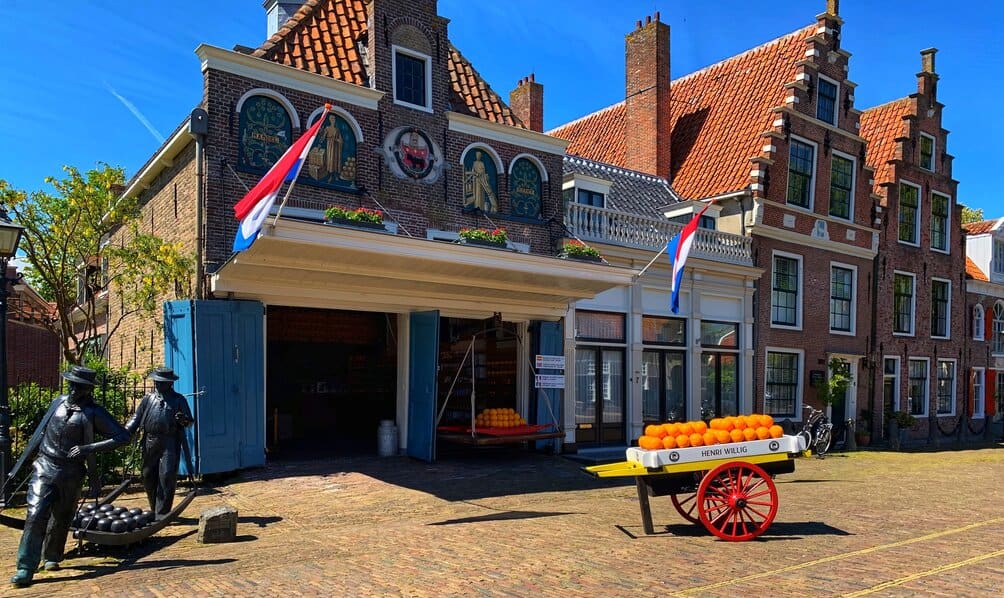
Cheese is typically enjoyed with fresh bread. But you can also eat it plain or dip it in mustard. It’s good enough to have as a meal on its own, and many Dutch folks do just that at lunch. You can buy vacuum sealed small wheels of cheese that you can take home with you from any cheese shop or supermarket, or at the airport should you wish to overpay.
Is this sounding tasty to you? Then check out my Ultimate 7 Day Netherlands Itinerary and my Local’s Guide to Amsterdam.
Dutch food tours
Numerous tour companies in Amsterdam offer various food tours, usually focusing on street food like haring or kibbeling. If you want to try it all at once with a local guide, consider joining an Amsterdam Dutch Street Food Market tour while you’re in town. For instance, this Amsterdam’s Albert Cuyp Market guided tour. Or check out some of the other food related tours below.
Eat your way in Jordaan district on this guided foodie walking tour. Savor the taste of several food samplings in 6 local eateries famous among the tourists and locals. Book the high-rated food tour here.
Contemporary and ethnic restaurants
I like to think of restaurants in the Netherlands as one of two types: contemporary or ethnic. Contemporary restaurants serve modern western and Dutch food. At a standard contemporary restaurant in Amsterdam you’ll find things like burgers, barbecue ribs, steaks, pizzas, fish, and chicken satay on the menu. That last one might seem out of place but that’s a very Dutch thing. Indonesian-style chicken satay (peanut sauce) is on almost every contemporary menu.
Contrary to these contemporary restaurants, you will also find a ton of ethnic restaurants, especially in Amsterdam. And if you ask me, ethnic is the way to go. Amsterdam has some of the best and most authentic Asian restaurants you’ll find in Europe. You can find anything here. From Indonesian food to Syrian food, you won’t be disappointed. There were a few Chinese restaurants I used to love to go to.
In the Netherlands you’ll also find a cuisine you might see anywhere else in the world: Surinamese food. Did you know that the South American country of Suriname speaks Dutch? You do now. It’s one of the Dutch colonies that actually stuck. So there are tons of Surinamese immigrants in the Netherlands. The food is far more similar to southeast Asian than it is to other South American cuisines. If you’re looking for a quick meal definitely check out a Surinamese restaurant!
The Dutch Lunch
One of the biggest culture shocks for me living in the Netherlands was what the Dutch eat for lunch. Traditionally, lunch is not to be a warm meal, and pretty much none of the Dutch food listed above is for lunch.
You eat bread with cheese or maybe a cold cut meat sandwich with some Haagenslas (chocolate sprinkles) or some other interesting spread. And every day you eat the same thing. Dutch food culture at lunch didn’t suit me. I couldn’t handle it. Luckily I brought my own lunch to work every day.
Now as a tourist you shouldn’t have to deal with this. Many restaurants are not open for lunch, but plenty are. And going out for lunch is becoming more common among the locals. But you shouldn’t assume a restaurant you want to try will be open for lunch. Make sure to check in advance.
If you’re coming on business, just be prepared to be disappointed by the lunch provided at your meeting. That is unless you like cucumber and cheese sandwiches on yesterday’s supermarket bread rolls!
Dutch Fast Food Culture
For a quick meal you’ve got some options, but not as many as you’re used to if you’re coming from the US or the UK. The standards are all there: McDonald’s, Burger King, KFC. But for the love of god don’t go there while you’re on vacation!
The typical Dutch fast food is doner kebab. Kebab places are literally everywhere. It’s usually about 5-6 euro for a wrap with either chicken, beef, or falafel. Every train station has at least one kebab place if you’re ever hungry late at night.
These days more healthier fast food options are popping up, but in general there are not many healthy quick meal options. There’s a chipotle rip-off called Salsa Shop that is opening new stores all over the place. I used to love the barbacoa bowl there. There is also a large food hall, the Foodhalen though it’s a bit off the tourist path.
If you’re looking for something super unhealthy and disappointing there are tons of places called “snack bars” that have pre made pizza, kebabs, and things like chocolate covered waffles and other sweets. I recommend avoiding those though. If you need a quick bite stop by a kebab shop. And if you just want Belgian-style French fries, there are tons of places that just sell fries too.
Eating Out in the Netherlands
There are many things to know before visiting Amsterdam or the Netherlands for the first time. Here I’ll go through some additional things to know specifically related to eating at restaurants in the Netherlands.
Meal time
The Dutch eat earlier than many other European cultures. If you’re outside of a major city it’s very possible for a restaurant to close at 8:00 PM. In the city you should be fine till 10 usually.
If you’re from Spain or India or somewhere that’s used to eating late you’re gonna have to show up a bit earlier than you’re used to. If you’re an early eater you should be fine as most places open by 5.
Portion size
I was surprised to see when I got to the Netherlands that portion sizes at restaurants were quite substantial. Not quite the massive plate of food you get in the US, but enough to leave you full or packing leftovers. Side note: the Dutch don’t like to take leftovers. You need to specifically ask to take away the food you didn’t finish. Don’t expect it to be offered.
Smoking
If you’re an American from a city, you can probably count the number of people you’ve seen smoking in the past month on one hand. So get prepared for a different experience in the Netherlands. Smoking is still very prevalent here. Not as much as France, but you can reasonably expect to get a fair amount of secondhand hand smoke when you’re sitting outside enjoying a meal.
It’s not allowed anywhere indoors, but if it’s a nice day and everyone is sitting outside just be prepared for cigarette smoke coming from all directions. There is really nothing you can do to avoid it. Your hotel gives shampoo, right?
Healthy eating
If you’re a clean eater you just have to watch out what you order in the Netherlands. For a land of tall skinny people, they eat a lot of fried food and Dutch food tends to be not so healthy, though very fresh. I guess they burn off all the calories biking everywhere. Don’t blindly order from a menu. If they don’t have an English menu, ask the server. Everyone speaks English so it won’t be a problem.
Drinks
The Netherlands really isn’t known for any particular drink. The climate isn’t right to grow grapes so there are very few wine makers in the country (though they do exist). The Dutch haven’t invented any well known cocktails either. But beer is ingrained in their culture.
Maybe you’ve heard of Heineken? The Dutch beer conglomerate is the second largest beer company in the world. But there’s more to Dutch beer than Heineken, even though it’s literally everywhere. There are plenty of awesome craft beers these days you can find all over Amsterdam and other cities.

Below are some of the top breweries to look out for when you’re looking at the bierkaart “beer menu” in the Netherlands. Better yet, visit the breweries themselves. Check out my list of the 10 best breweries in Amsterdam for more information.
- Brouwerij ‘t IJ
- Uiltje
- Brouwerij de Prael
- Oedipus Brewing
- Brouwerij Troost
- Lowlander Beer
- Two Chefs Brewing
- Jopen
The post on the best breweries in Amsterdam also goes into detail about some of the best craft beer bars in the city. A few examples are listed below.
- Cafe Gollem Raamsteeg
- Beer Temple
- Beer Tasting Room in the Wilderman
- Cafe Gollem Amstelstraat
The Argentinian Steakhouse
One of the most peculiar things about the restaurant scene in Amsterdam is the ludicrous number of Argentinian steakhouses in the city center. You’ll see these around town, often with a neon light in the shape of a bull.
They’ll say “Argentijn steakhouse” or “Argentinian Steakhouse” out front and are usually pretty small inside. I’m sure plenty of clueless tourists leave Amsterdam every day associating Dutch food culture with crappy Argentinian steakhouses.
Now the most important thing to note about all these restaurants is that they are not actually quality Argentinian steakhouses. In general, they offer mediocre to poor quality steaks that are nothing like you’ll find in Argentina.
They also usually offer other unimpressive barbecued meats and simple meals. Overall, they are not good. But don’t take my word for it. Search for Argentinian steakhouses in Amsterdam on google maps and read the reviews.
So why are there so many of these restaurants if they are not good? How do they stay in business? The answer is that nobody really knows. The most logical conclusion is that they offer cheap and quick meals and people typically don’t come to Amsterdam for culinary reasons.
They have great locations in the city center and people stop by since they look interesting, unaware there are better places to eat just next door. The Argentinian steakhouse phenomenon is just an Amsterdam thing. You don’t see it in any other Dutch city. So don’t be fooled, avoid these restaurants at all costs.
My Top Amsterdam Restaurants
So now it’s time to share some restaurant recommendations in and near Amsterdam. I don’t have strong feelings about restaurants in other Dutch cities, and chances are you’ll spend the majority of your trip in Amsterdam anyways, at least if you follow my ultimate Netherlands travel itinerary.
Remember this is just my personal list and I have not eaten at every restaurant in Amsterdam. Far from it. I also don’t eat at fine dining establishments because I don’t like leaving restaurants hungry so none of these fall in that category.
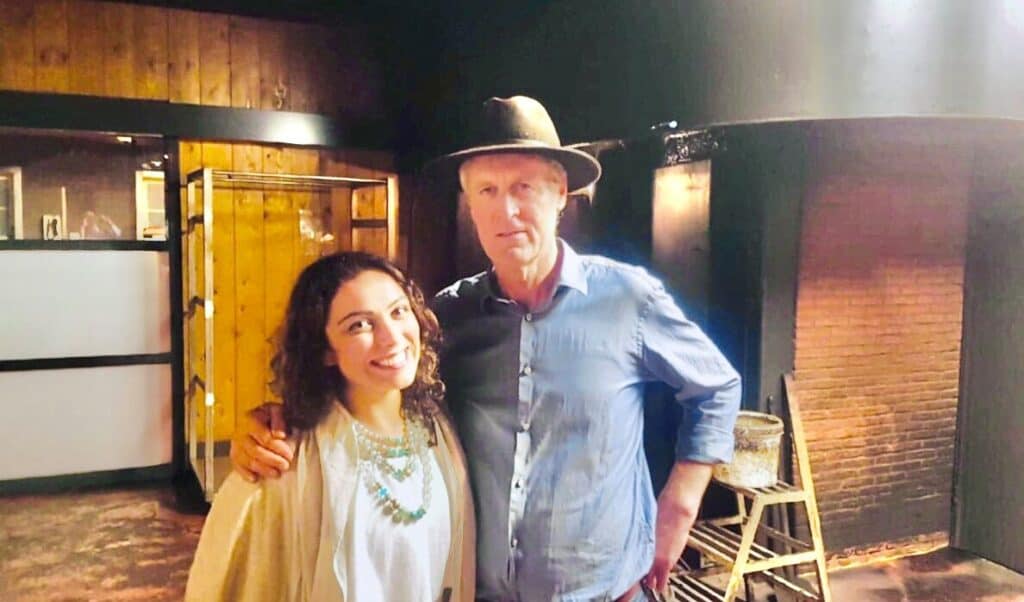
- Bird Thai: one of the best Thai restaurants I’ve been to, including my time in Thailand. No reservations taken. Waiting in a single file line outside is necessary.
- Ashoka: the best Indian restaurant in the city. It’s small so bookings are essential.
- Aneka Rasa: a great and affordable Indonesian rice table restaurant in the city center. Booking not essential but recommended. Come hungry.
- Sichuan Restaurant: numerous locations downtown for authentic Chinese food.
- Ali Okagbasi: awesome Turkish restaurant on the inner canal ring.
- Persian Parsa: great Iranian/Persian cuisine just west of the city center. Usually not busy so booking is not required.
- Cafe Kobalt: one of the best contemporary restaurants in my opinion. Try the beef ribs.
- Restaurant ‘t Zwaantje: if you want to try some of the traditional Dutch meals I described above you can head here (or Restaurant Moeders, which is tough to get a booking at).
- Smit-Bokkum (Volendam): my favorite seafood restaurant in the Netherlands is about a 40 minute bus ride north of Amsterdam in the little fishing village of Volendam. You have to try the smoked eel. Booking essential. Not cheap but worth it.
Frequently Asked Questions About Dutch Food
What is traditional Dutch food?
Traditional Dutch food is meat and potato or fish based for dinner and bread and cheese based for everything else. Beef stew and stamppot are two of the more common, hearty Dutch meals. Raw herring and other North Sea fishes are commonly consumed as well.
What is going Dutch in a meal?
“Going Dutch” in a meal has nothing to do with Dutch food or anything food related. It means splitting the bill evenly, like when out on a date.
If a Dutch guy pays for dinner for a lady, the girl might expect to receive a “Tikkie” for half the bill the next day. Tikkie is a Dutch app where you can send someone a payment request. It’s quite handy sometimes, though it’s become notorious for guys sending payment requests to girls after a bad first date!
What is the most known Dutch food?
The most known Dutch food is probably raw herring with pickles and onions. But it’s hard to say. No Dutch food is popular globally.
What do the Dutch eat for breakfast?
Dutch breakfast is similar to other northern European breakfasts. It’s bread, cheese and cold-cut meat based, very similar to Dutch lunch. These days Dutch folks eat all sorts of things for breakfast. If you’re at a hotel in the Netherlands you can expect to get various breads, cheeses, and meats, as well as eggs, sausages and other more English-style breakfast items.
What is a Dutch style lunch?
The Dutch lunch is traditionally any combination of bread, cheese, cold cut meats, and various spreads (including chocolate sprinkles). Lunch is not a warm meal, which usually throws off foreigners. There is a whole section above on the Dutch lunch for further reading.
Final Word on Dutch Food Culture
There are plenty of places to stuff your face with great food in the Netherlands. But also plenty of places that will disappoint you greatly. So follow my tips here and you’ll have yourself a delicious time. And if all this sounds good to you, maybe a life in Amsterdam is in your future!

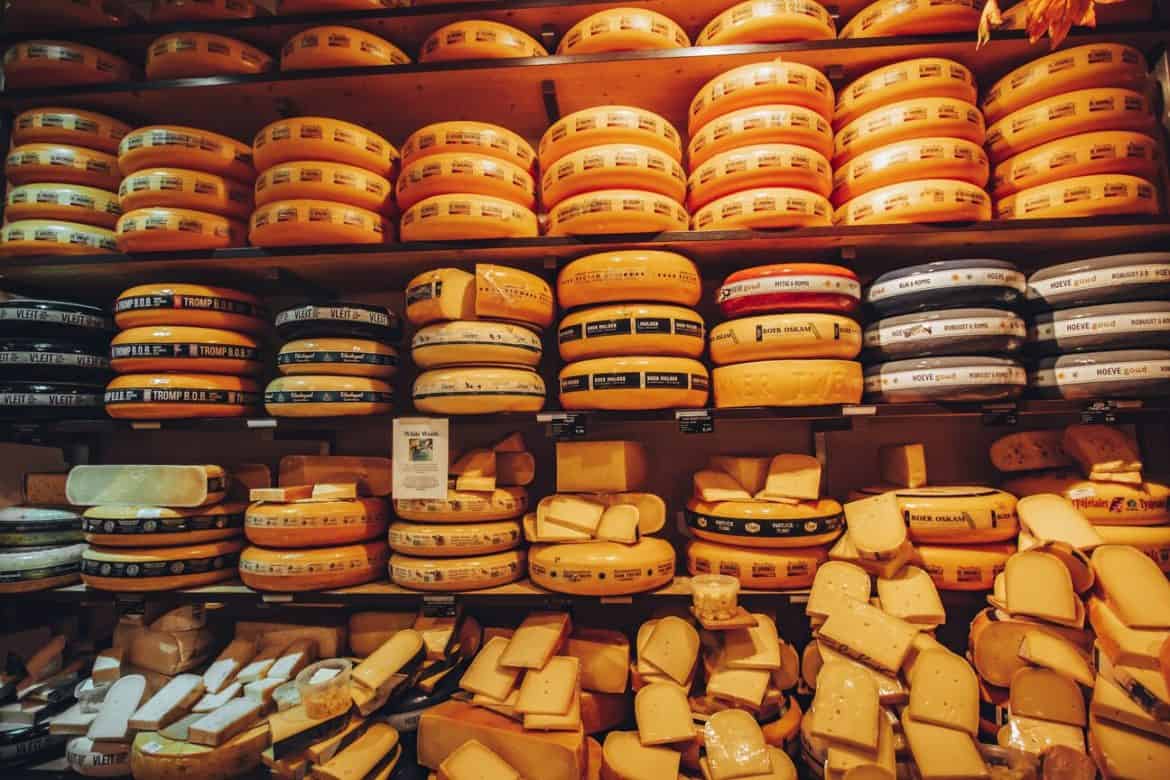
6 comments
[…] In the Netherlands, poffertjes answer the question, “What is another name for mini pancakes?” These fluffy delights, cooked in a specialized pan, are a staple of Dutch street food. […]
[…] a full guide to Dutch food culture and eating out in the Netherlands refer to this detailed article on the subject. And without further distraction let’s get down to it. Here are the top 10 foods […]
[…] to find veganised versions of authentic local foods. Below are a few vegan versions of traditional Dutch food that I was able to find in […]
[…] Dutch food culture interests you, read this overview of eating in the Netherlands, which I can say, from my 25 years in the Netherlands, is completely correct, except that I would […]
[…] On Valentine’s Day, start with breakfast at one of the famous cafes in Amsterdam, then head to the Noordermarkt to check the local markets, like trying some dutch cheese. Afterward, enjoy the dutch apple pie named Appeltaart at Winkel 43. It is a great way to explore the Dutch food culture. […]
[…] IJ, Brouwerij De Prael, Brouwerij Troost, and Oedipus Brewing. While you’re at it, have some traditional Dutch food […]